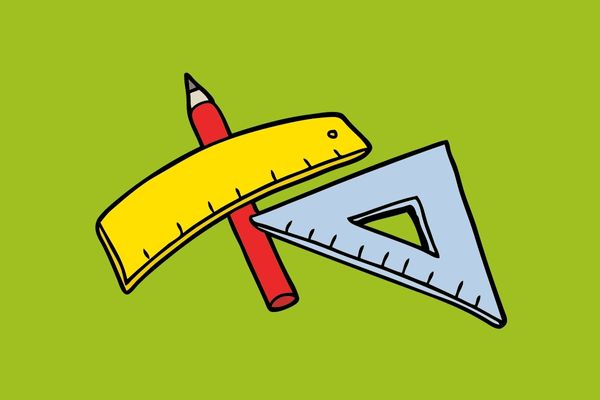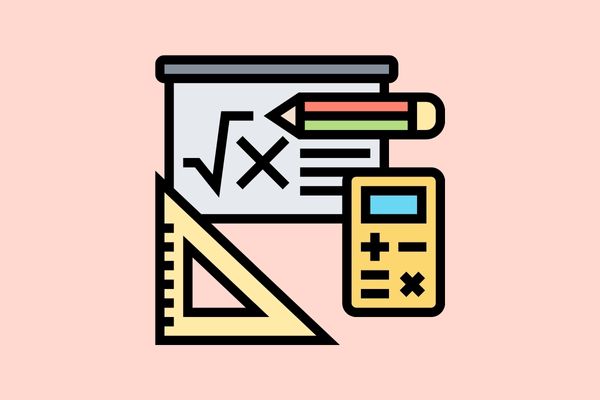Geometry, Tables and Graphs

The study of Geometry, Tables and Graphs holds a significant place within the realm of the Common Law Admission Test (CLAT) Quantitative Aptitude section. This segment assesses your ability to interpret and analyse various geometrical shapes, data presented in tables and graphical representations. As a student gearing up for the CLAT, mastering these concepts is crucial to bolster your mathematical and logical reasoning skills. In this article, we will delve into the core concepts of Geometry, Tables and Graphs, provide illustrative examples and offer strategies to effectively conquer this diverse area.
Understanding Geometry Fundamentals
Before we explore the intricacies of solving Geometry problems, let’s establish foundational concepts:
- Points, Lines and Angles: Geometry involves understanding basic elements like points (no size), lines (infinitely extending in both directions) and angles (formed by two intersecting lines).
- Types of Angles: Acute angles are less than 90 degrees; obtuse angles are greater than 90 degrees and right angles are exactly 90 degrees.
- Triangles: Triangles have three sides and three angles. They can be classified as equilateral (all sides equal), isosceles (two sides equal) or scalene (no sides equal).
- Quadrilaterals: Quadrilaterals are four-sided polygons. Examples include squares, rectangles, parallelograms and trapezoids.
Solving Geometry Problems: Concepts and Examples
Example 1: Calculating Triangle Angles
Question: In a triangle, if one angle measures 45 degrees and another angle measures 60 degrees, find the measure of the third angle.
Solution: Since the sum of angles in a triangle is always 180 degrees, the third angle’s measure will be 180 – 45 – 60 = 75 degrees.
Example 2: Perimeter of a Rectangle
Question: If the length of a rectangle is 10 units and its width is 5 units, calculate its perimeter.
Solution: The perimeter of a rectangle is given by the formula: 2 × (length + width). Plugging in the values, the perimeter is 2 × (10 + 5) = 30 units.
Understanding Tables and Graphs
Interpreting tables and graphs is an essential skill for analysing data effectively:
Tables: Tables present data in a structured format, with rows and columns. They provide an organised way to display numerical information.
Graphs: Graphs visually represent data through various types like bar graphs, line graphs and pie charts. They make it easier to understand trends and patterns.
Solving Problems Using Tables and Graphs: Examples
Example 1: Interpreting Bar Graph
Question: In a bar graph showing the sales of different products, if Product A has sales of 150 units and Product B has sales of 120 units, which product had higher sales?
Solution: Product A had higher sales with 150 units compared to Product B’s 120 units.
Example 2: Analysing Line Graph
Question: In a line graph representing temperature over a week, if the temperature decreased from 30°C to 20°C, find the change in temperature.
Solution: The change in temperature is 30°C – 20°C = 10°C.
Strategies for Tackling Geometry, Tables and Graphs
Approaching Geometry, Tables and Graphs problems requires a combination of observation and analysis. Here are strategies to navigate through these problems adeptly:
- Visualise: Create mental images of geometric shapes to better understand their properties and relationships.
- Label and Annotate: On tables and graphs, label axes, data points and key information to make interpretations clearer.
- Read Carefully: Pay attention to labels, units and scales in graphs and tables. Misinterpretation can lead to incorrect conclusions.
- Practice Visualisation: Practice translating between graphical representations and their real-world counterparts.
Conclusion
Geometry, Tables and Graphs problems might initially seem complex, but with a firm grasp of the fundamental concepts and consistent practice, you can confidently conquer this diverse area of Quantitative Aptitude. Internalise geometry elements, interpret tables, analyse graphs and implement effective strategies. As you prepare for the CLAT, mastering these concepts not only elevates your mathematical proficiency but also enhances your overall aptitude for competitive exams. So, dive into Geometry, Tables and Graphs problems with enthusiasm and diligence, knowing that a solid grasp of these concepts will undoubtedly contribute to your success.
Calling all law aspirants!
Are you exhausted from constantly searching for study materials and question banks? Worry not!
With over 15,000 students already engaged, you definitely don't want to be left out.
Become a member of the most vibrant law aspirants community out there!
It’s FREE! Hurry!
Join our WhatsApp Groups (Click Here) and Telegram Channel (Click Here) today, and receive instant notifications.





